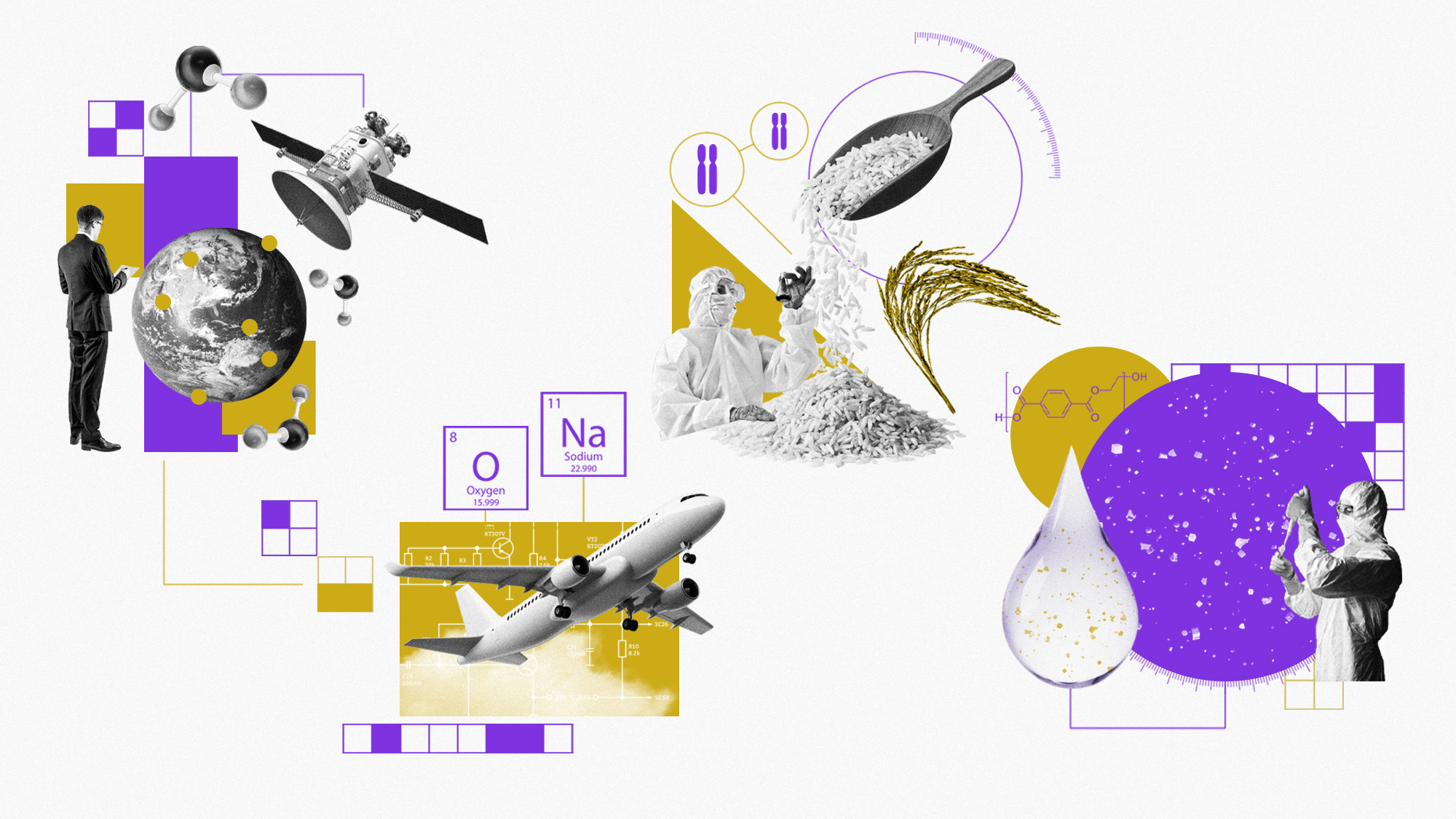The virus that strikes once a year
Flu season is upon us, and this year the vaccine is in short supply. Why are so many people so worried?
What causes the flu?
A virus that is one-millionth of an inch long. Viruses are not, strictly speaking, alive; they’re bundles of proteins programmed to reproduce themselves. They can only do this by invading a living host. Flu viruses are constantly circulating in people and in animals. They spread most easily when the weather grows cold and people spend more time indoors, in close quarters. You can become infected through direct contact with someone who has the flu, through inhaling airborne viruses expelled in sneezes, or by touching surfaces previously touched by an infected person. In any given year, from 10 percent to 20 percent of the population comes down with the flu.
What happens to these poor souls?
The Week
Escape your echo chamber. Get the facts behind the news, plus analysis from multiple perspectives.

Sign up for The Week's Free Newsletters
From our morning news briefing to a weekly Good News Newsletter, get the best of The Week delivered directly to your inbox.
From our morning news briefing to a weekly Good News Newsletter, get the best of The Week delivered directly to your inbox.
For a week to 10 days, they become very miserable human beings. First, the flu virus burrows into individual cells in the respiratory system. There, the virus commandeers the cells’ enzymes and begins churning out copies of itself. When an infected cell is full of virus particles, the invaders burst out of the cell, spreading the infection to other cells. Soon, the spreading infection triggers a massive immune system response: Your temperature soars to 102 to 106 degrees (viruses replicate less effectively in a warmer body). Your nose fills with mucus, and your throat reddens and becomes sore. You cough and sneeze in an attempt to expel the virus. Your muscles ache. You shiver. As the battle between the virus and the immune system rages within you, you become so weak you can barely stand.
Is it a serious illness?
Not for most people. Given a week or so, a healthy immune system manufactures antibodies that hunt down the invaders, attach themselves, and render the virus harmless. But infants, the elderly, and people with compromised immune systems can suffer dire complications. Mucus released by the body as it fights the flu provides fertile ground for bacterial infection. Pneumonia can arise in lungs weakened by the viral attack. The flu kills about 36,000 Americans every year, about one in every 1,000 infected. The elderly are at greatest risk: 90 percent of those killed are over 65. That’s why the government recommends that people over 50 get vaccinated every year.
How well do vaccines work?
A free daily email with the biggest news stories of the day – and the best features from TheWeek.com
That varies from year to year, because the flu is a moving target. Like all viruses, it mutates frequently. So at any given time, there are many flu “strains” in the world. Vaccines consist of bits of inactive flu virus that “teach” the body to make antibodies to specific strains. Unfortunately, antibodies don’t recognize new strains. Each year, vaccine makers must make an educated guess as to which flu strains are most likely to be circulating. If they guess right, the vaccine can be very effective; if they guess wrong, the vaccine may only lessen the symptoms of the infection.
Do all flu strains cause the same symptoms?
No. Some varieties of the flu make people far sicker. The biggest threat comes from strains created when one form of the virus jumps from an animal species to a human already infected with a more common type of flu. Inside the human host, the two viruses combine to create a brand-new strain to which no one on the planet has any prior immunity. That virus can then race through the population like a fire through dry tinder. This, scientists now think, is what happened during the “Spanish flu” pandemic of 1918 and 1919—the most deadly flu of all time.
How many people became sick?
Throughout the world, the Spanish flu killed an estimated 50 million people—more lives than were claimed by the Black Death in the 1300s. “It was a plague so deadly,” Gina Kolata says in her book Flu, “that if a similar virus were to strike today, it would kill more people in a single year than heart disease, cancers, strokes, chronic pulmonary disease, AIDS, and Alzheimer’s disease combined.” One American in four was stricken, and between 500,000 and 675,000 died in the U.S. alone. By the time the disease had run its course, life expectancy in the U.S. had fallen from 51 years to 39. “The only way we could find room for the sick,” one doctor said years later, “was to have undertakers waiting at the door, ready to remove bodies as the victims died.”
Could that happen again?
The death toll would probably not be that great, due to advances in medical care. But another pandemic is inevitable. “Pandemics come in cycles and we’re overdue for one,” says Dr. Donald Perlman, an immunologist at the University of Medicine and Dentistry in New Jersey. Scientists particularly worry about avian flu viruses common in Asia, where people often handle live chickens and ducks in markets and can become infected. In 1997, a chicken flu virus broke out among the population of Hong Kong, and authorities slaughtered 1.2 million birds to stop its spread. An avian flu outbreak in Thailand and Vietnam this year killed 31 of the 43 people who contracted it. Tens of millions of birds were killed to keep the infection from spreading, but scientists still worry that a deadly new pandemic could be brewing in Asia. “If this avian flu gets loose in the world,” says Perlman, “it could be a huge disaster.”
The vaccine problem
-
 The most anticipated movies of 2026
The most anticipated movies of 2026The Week Recommends If the trailers are anything to go by, film buffs are in for a treat
-
 The biggest viral moments of 2025
The biggest viral moments of 2025In the Spotlight From the Coldplay concert kiss cam to a celebrity space mission, these are some of the craziest, and most unexpected, things to happen this year
-
 Environment breakthroughs of 2025
Environment breakthroughs of 2025In Depth Progress was made this year on carbon dioxide tracking, food waste upcycling, sodium batteries, microplastic monitoring and green concrete